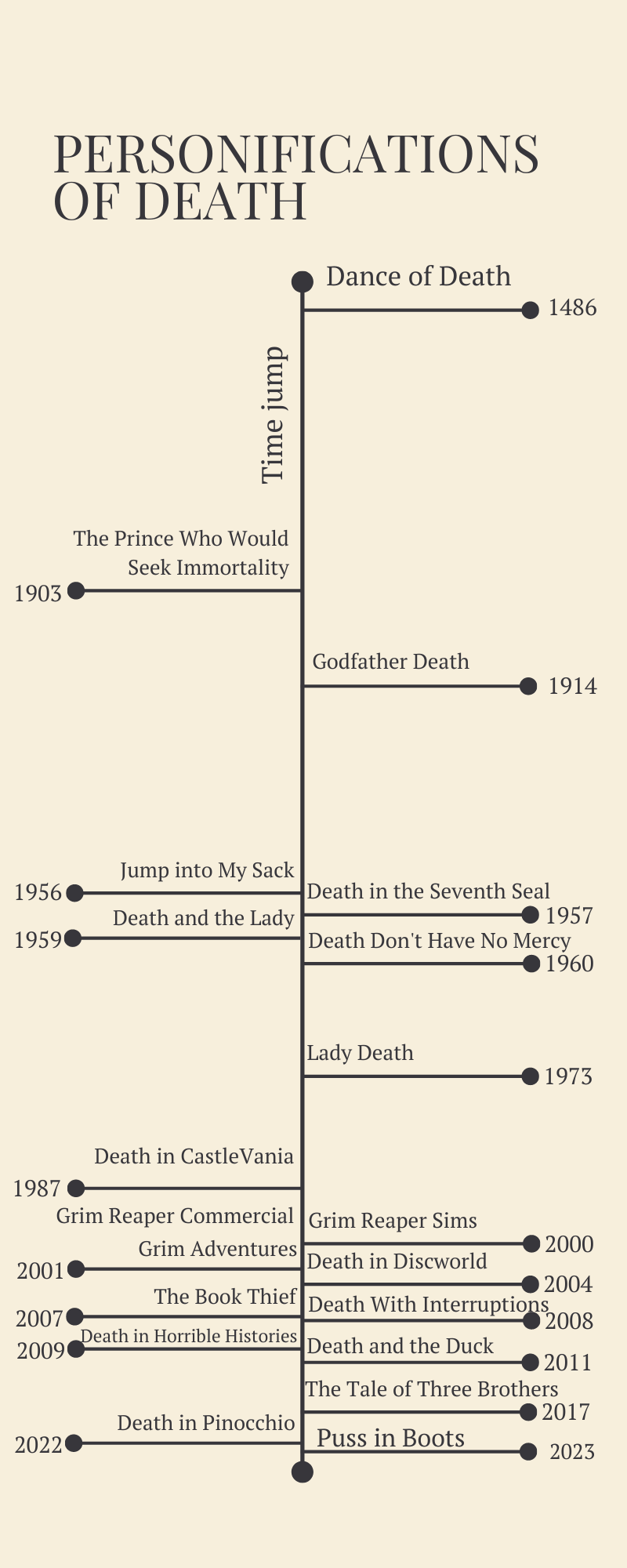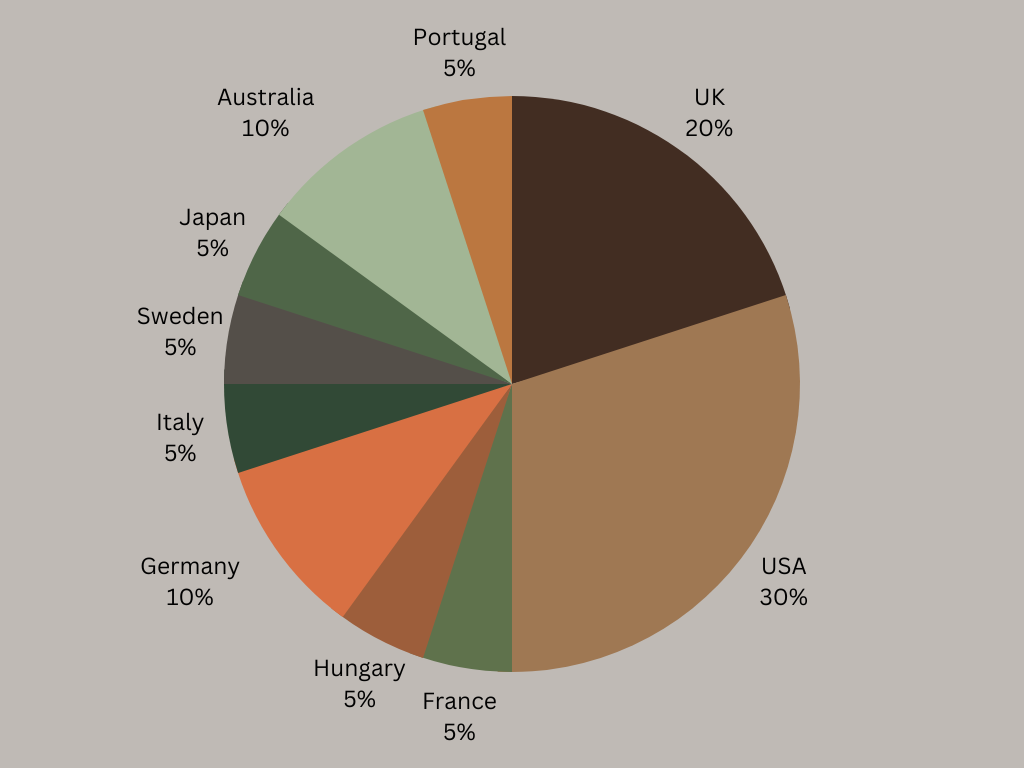Methodology and Findings
In researching pieces of media that personify death I found a wide range of items. In cataloging these items I took care to document the different facets of these items I felt were important to answering my research questions. Is there a reason people personify Death? Can those reasons be linked to world events?
I formed my resource template around these questions. This is why I chose each category:
Title — I titled the items in this collection based on what they depicted. I occasionally included the media source in the title, but most often titled the items based on the character names.
List of Contributors — I used list of contributors as opposed to creator or author in order to refer to the multiple people involved in the creation of each item. Most items not only include an author but an illustrator or a performer or a translator. Utilizing this label allows freedom to name all involved without creating so many fields.
Source — I included source in my template to link the items back to their original source work.
Date Created
Date Issued— Some items include both date created and date issued, others include only date issued. this is intended to reference that some of these worked have been published multiple times. To indicate a specific edition may refer to the illustration included or the translation, all of which shape our view of the character of "Death."
Subject — I utilized subject to refer to not only the subject of Death, but how Death functioned within the story. I also tagged these functions on the site so that one can click and see all the similar themes in one place.
Description — Description was used to describe Death's role in the story in more detail.
Format — Format indicates the form the item takes. For example: a section of a book, a movie, a performance, a video game character, etc.
Audience — In tracking the intended audience of each work I was able to see how often examples of personification exist for children and for adults.
Publisher
Coverage — Tracking the location of origin of each item also helped me analyze whether world events may contribute to the personification of Death.
is spatial projection of — This asset links together all instances of Death to one projection of "Death."
Identifier — I created the identifier by combining he acronym for Death in Media (DIM) with the year each piece was issued.
Rights — I am collecting these items and showing them here for research purposes under fair use.
The data collected could function as preliminary research for a larger project, but for now, the claims I can make are these.
Most often Death is personified in the last 20 years, however, it was also often personified in the middle of the 20th century. This does support my hypothesis that Death is often personified in times of turmoil. Fig. 1
Most media I collected was from the US and European countries, which makes sense as this personification of Death is influenced by Christianity. Fig. 2
Death is most often portrayed in these works as a guardian, or as someone with whom humans can bargain for their life. Surprisingly, Death is rarely portrayed as a villain — only 2 times out of 20. Death in these stories is often not portrayed as good or evil. Often Death is callous in taking lives, but many of the stories also include Death taking pity on humans, or gaining humanity. Perhaps because we don't want to believe that a higher power has no sympathy for our suffering.

